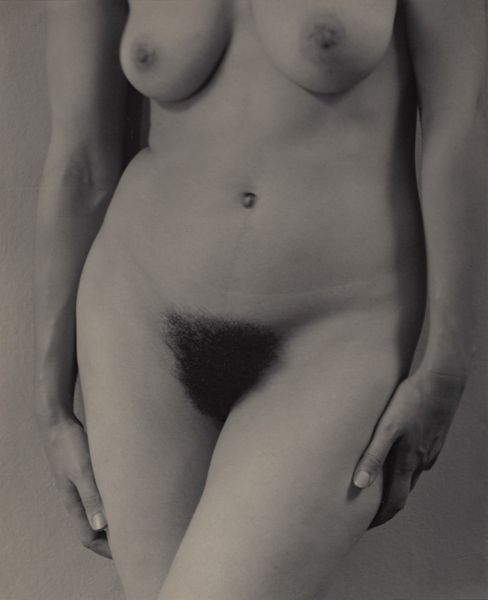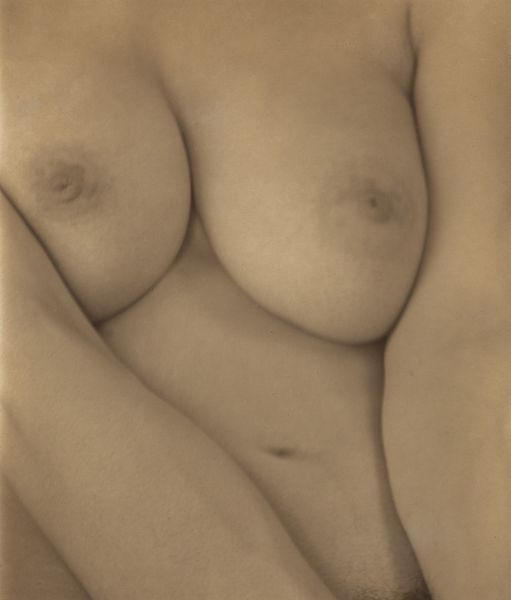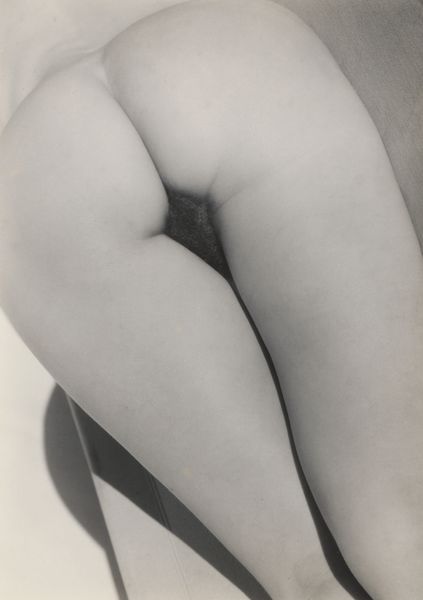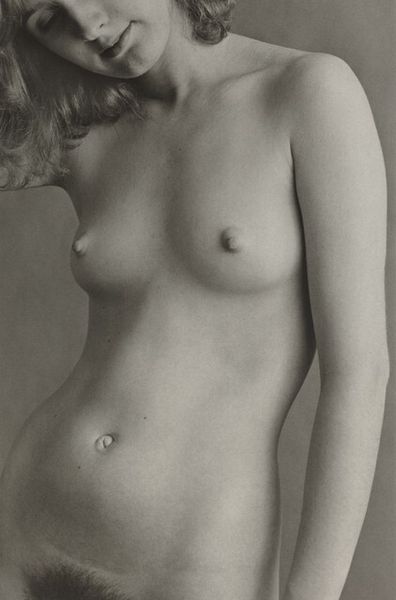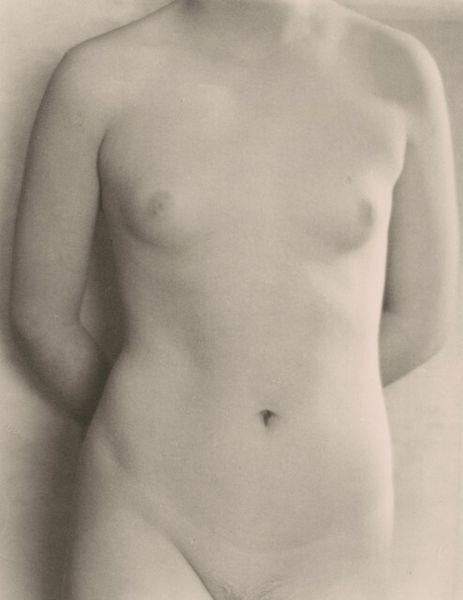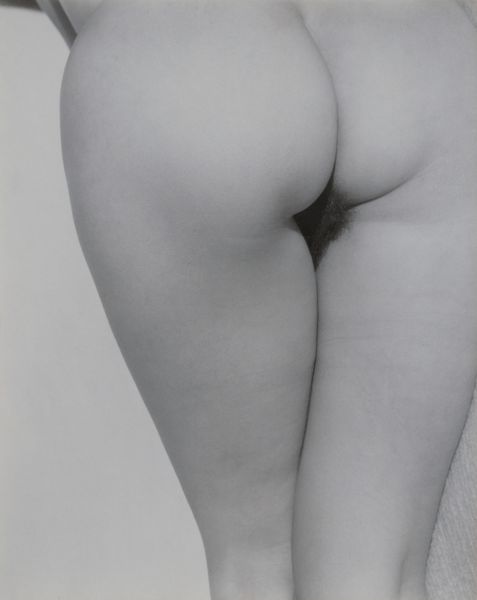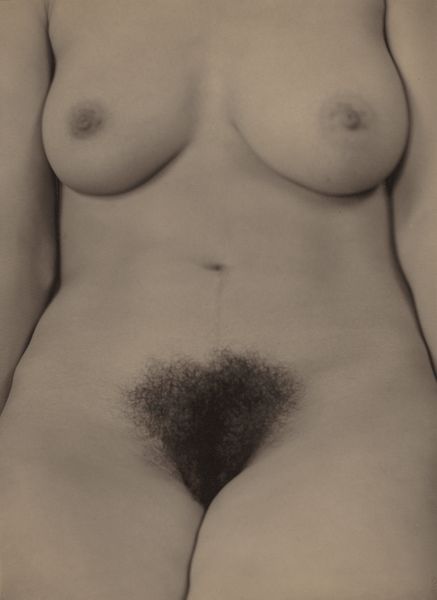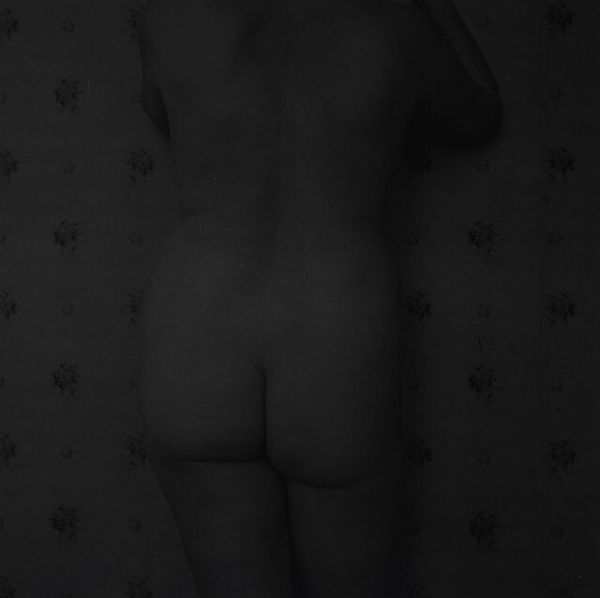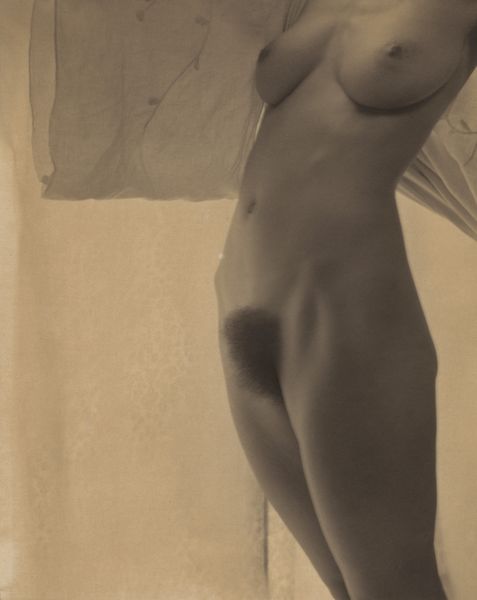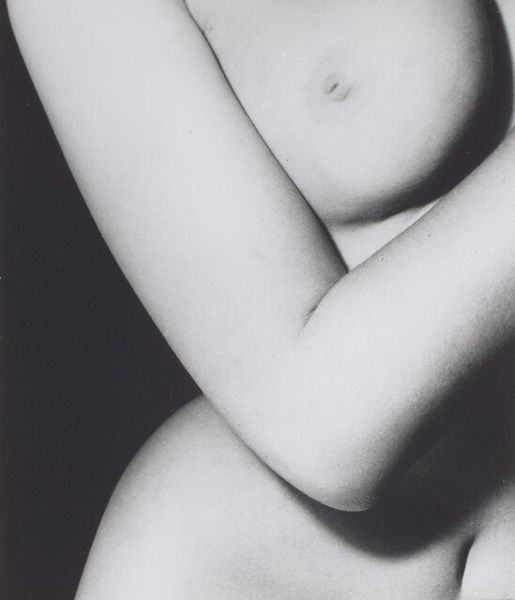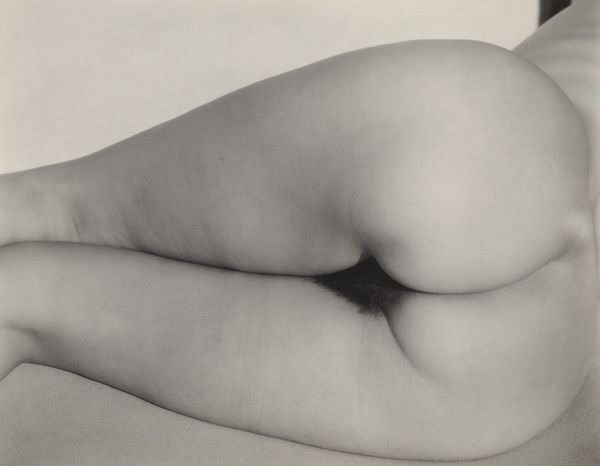
photography, gelatin-silver-print
#
portrait
#
pictorialism
#
charcoal drawing
#
photography
#
intimism
#
geometric
#
gelatin-silver-print
#
charcoal
#
nude
Dimensions: image: 23.8 x 18.6 cm (9 3/8 x 7 5/16 in.) sheet: 25.3 x 20.3 cm (9 15/16 x 8 in.)
Copyright: National Gallery of Art: CC0 1.0
Editor: Here we have Alfred Stieglitz's "Georgia O'Keeffe—Torso," a gelatin-silver print from between 1918 and 1919. The close cropping and stark lighting are quite striking, giving it an almost sculptural quality. What's your take on this photograph? Curator: As a materialist, I’m immediately drawn to the photograph as an object itself. Think about the process involved – the labor of setting up the shot, the chemistry of the developing process. And Stieglitz, as a champion of photography as fine art, was directly challenging the established hierarchy that privileged painting. Editor: So you see the artistic statement partly in the *making* of the piece? Curator: Precisely. He's using photography to explore intimacy, but also staking a claim for its validity as a high art form. Consider the materiality of the gelatin silver print; the textures, the tonal range he achieves. These aren't accidental; they are carefully crafted decisions, reflecting the industrial and scientific advancements that made photography possible. Editor: That's a fascinating way to look at it. It moves beyond just the subject matter to consider the whole context of production. Does his relationship with O’Keeffe factor into the materials you're discussing? Curator: Absolutely! The act of Stieglitz photographing O'Keeffe – and her consent – brings in layers of power dynamics and collaboration, further emphasizing the social context embedded within the very creation and dissemination of this print. It all gets processed together as part of one artifact. Editor: I see your point. Looking at it this way really highlights the photograph's complex position – as both an intimate portrayal and a statement about art and its making. Curator: Indeed. By focusing on the materials and process, we gain a deeper understanding of the photograph's significance within its historical and social landscape. We understand art production by its impact. Editor: That adds so much to my understanding of the image and Stieglitz's intentions. Thank you!
Comments
No comments
Be the first to comment and join the conversation on the ultimate creative platform.
